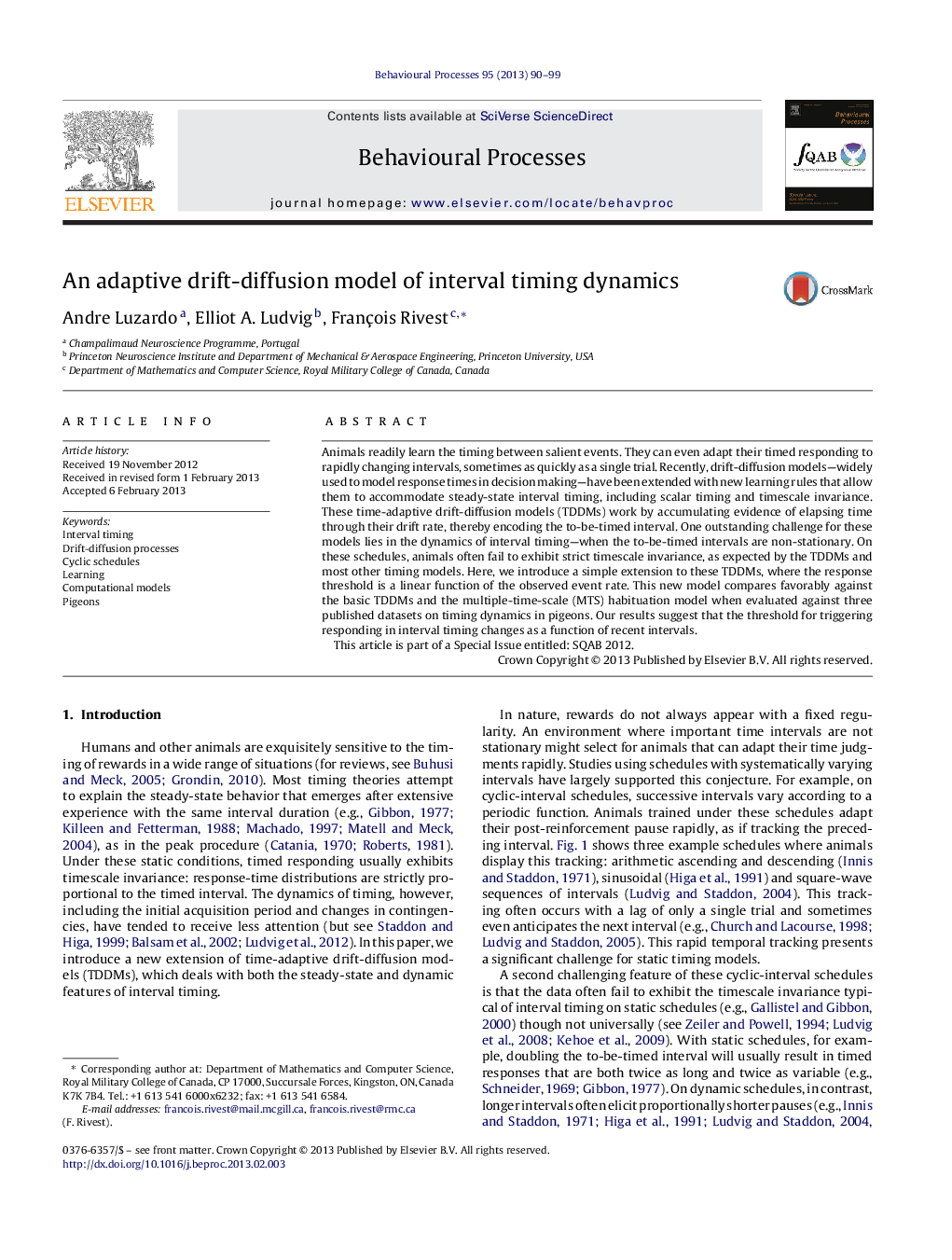| Article ID | Journal | Published Year | Pages | File Type |
|---|---|---|---|---|
| 2426855 | Behavioural Processes | 2013 | 10 Pages |
Animals readily learn the timing between salient events. They can even adapt their timed responding to rapidly changing intervals, sometimes as quickly as a single trial. Recently, drift-diffusion models—widely used to model response times in decision making—have been extended with new learning rules that allow them to accommodate steady-state interval timing, including scalar timing and timescale invariance. These time-adaptive drift-diffusion models (TDDMs) work by accumulating evidence of elapsing time through their drift rate, thereby encoding the to-be-timed interval. One outstanding challenge for these models lies in the dynamics of interval timing—when the to-be-timed intervals are non-stationary. On these schedules, animals often fail to exhibit strict timescale invariance, as expected by the TDDMs and most other timing models. Here, we introduce a simple extension to these TDDMs, where the response threshold is a linear function of the observed event rate. This new model compares favorably against the basic TDDMs and the multiple-time-scale (MTS) habituation model when evaluated against three published datasets on timing dynamics in pigeons. Our results suggest that the threshold for triggering responding in interval timing changes as a function of recent intervals.This article is part of a Special Issue entitled: SQAB 2012.
► A new computational model of interval timing dynamics is introduced. ► The model extends previous drift-diffusion models of timing with a linear threshold. ► The new model outperforms published timing models on three pigeons datasets.
